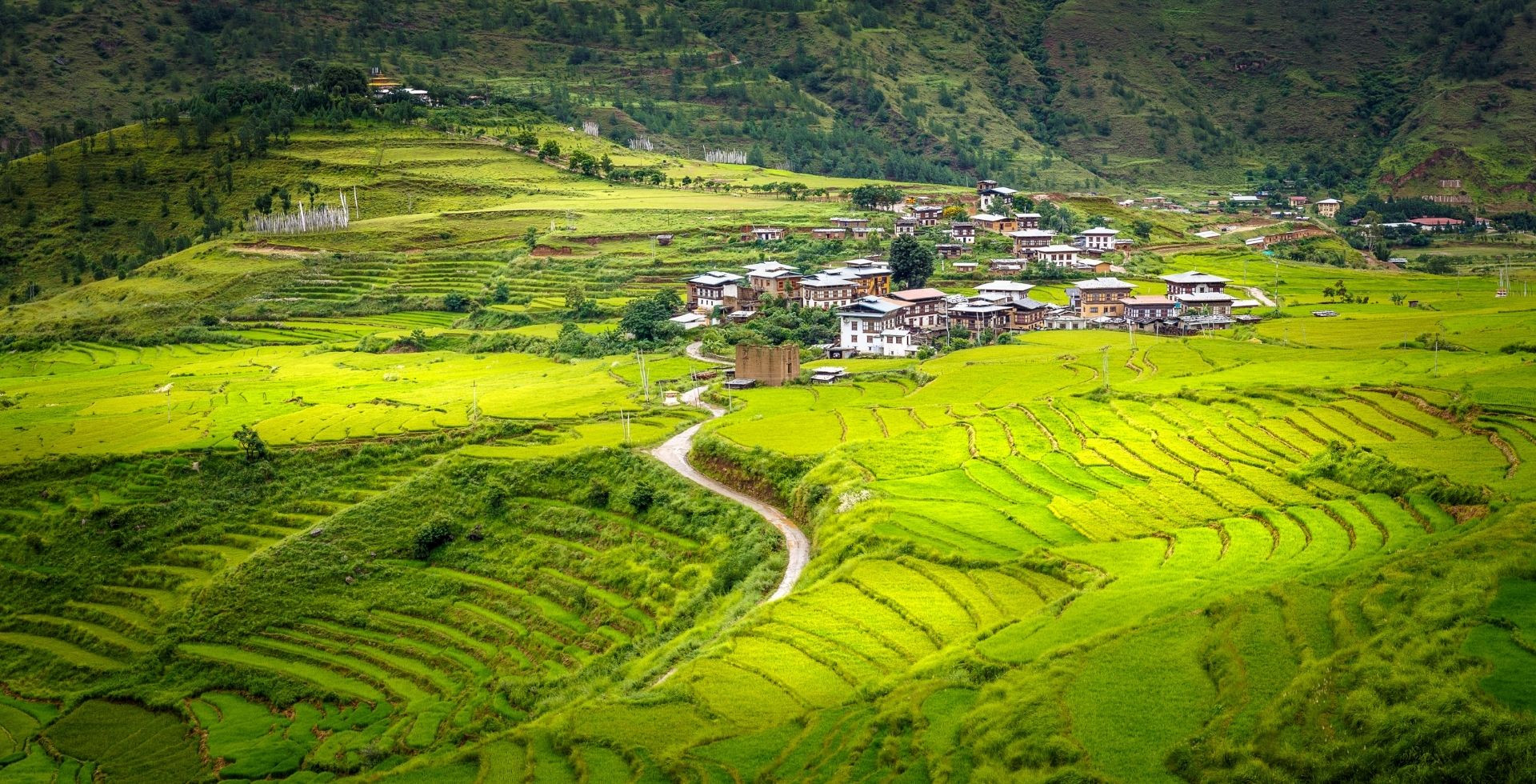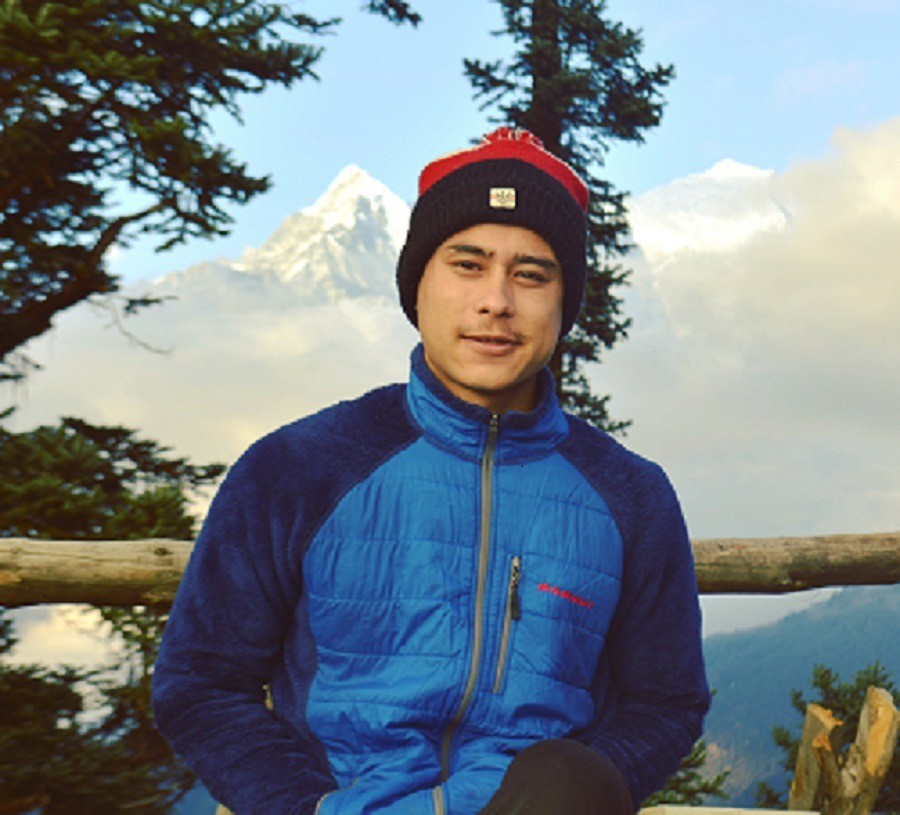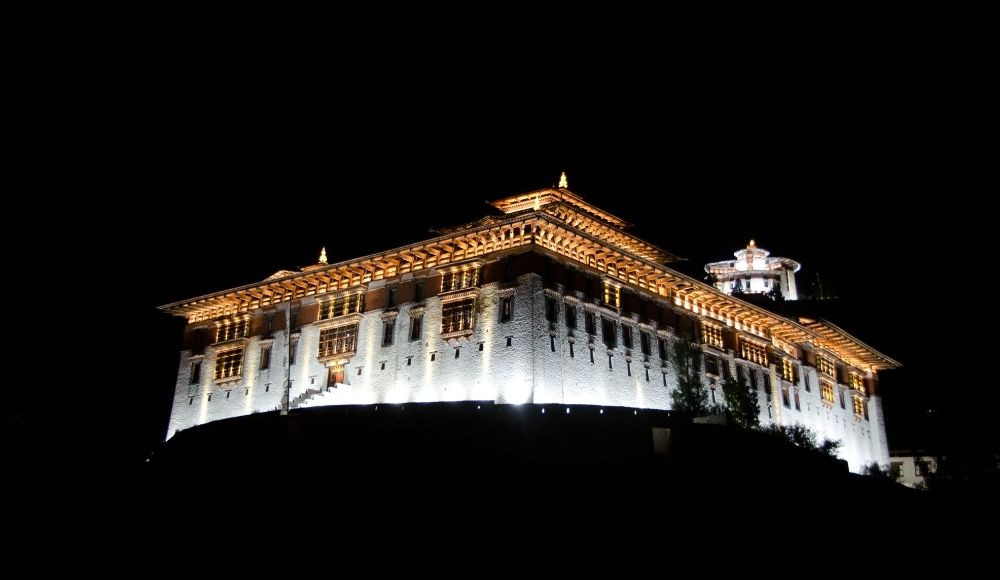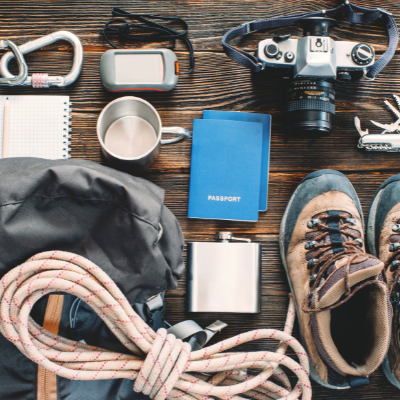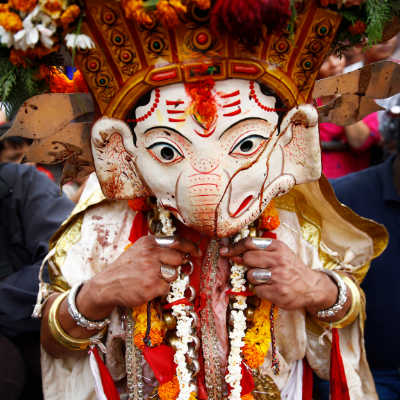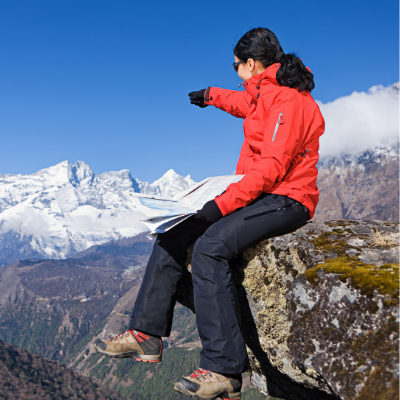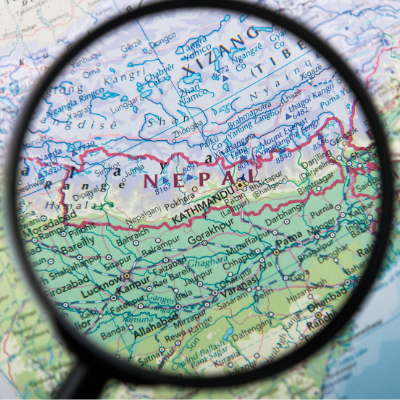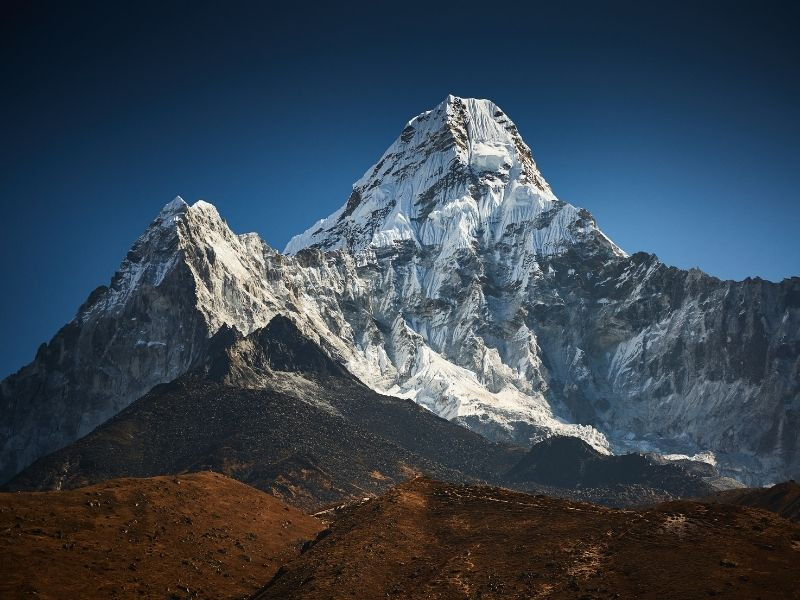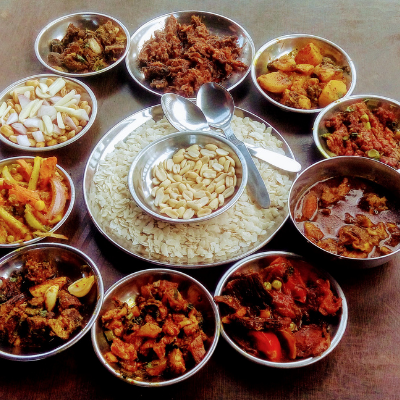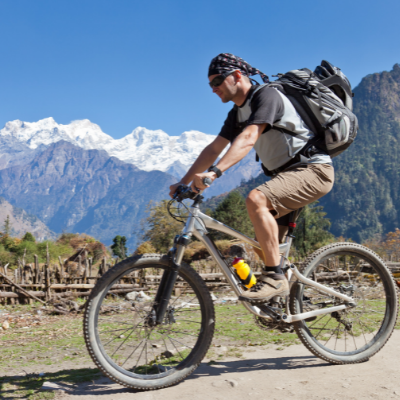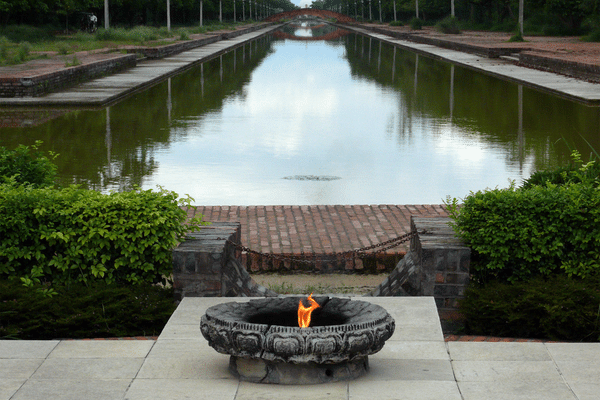One of the most mystical and unique places on earth, Bhutan has a lot of things to offer to its visitors. Although the travelling cost to Bhutan is more expensive than most of the countries of the world, the trip to Bhutan is worth it.
During the trip to Bhutan you can explore some of the vintage monasteries, astonishing valleys, mountain ranges and the unique tradition and culture of the locals.
Paro Taktsang
Also known by the name Taktsang Palphug Monastery or the Tiger’s Nest Monastery it is one of the major attractions of Bhutan. Situated at an elevation of 3,120 meters above sea level you will have to hike for a while to reach the top of the monastery. This cultural icon of Bhutan is believed to be the meditation cave of Guru Padmasambhava. Besides that it is also believed that Guru PadmaSambhava flew to this location from Singye Dzong on the back of a tigress. Because of that this monastery is also known by the name Tiger’s Nest.
Located in the Paro district of Bhutan, This was first established as a meditation cave in the 9th century. Meanwhile, it was later converted into a monastery in 1692. You can’t take a camera inside this monastery, however there are guides inside the cave who will explain in detail about the cave. During the hike to the top of the monastery you can get the fantastic views of the surroundings. Besides that the surrounding nature attracts the visitors with it’s bewitching beauty and serenity. Because of that without the visit to Paro Taktsang your Bhutan tour is incomplete.
There are three trails to reach the top of the Paro Taktsang from Paro city. The most popular path to reach the monastery passes through the pine forest which is decorated with bright prayer bannerettes. These praying bannerettes symbolizes the protection from evil forces, positive energy as well as vitality and good luck. Similarly, the other two trails pass through the plateaus which is popularly known by the name “a hundred thousand fairies” plateau.
|
Facts of Paro Taktsang
|
|
Altitude
|
3,120 Meters
|
|
Location
|
Paro District
|
|
Established
|
9th Century (as a cave)
|
|
Build as Monastery
|
1692
|
|
Hiking Distance
|
7- 8 Kilometers
|
|
Entry Fee
|
500
|
|
Number of Main Temples
|
4
|
|
Other Names
|
|
Dochula Pass
Dochula Pass is located on the east-west road from Thimphu to Punakha. Situated at an elevation of 3,100 meters above sea level, 360 degree views of the mountain ranges can be seen from the Dochula pass. Built in memory of Bhutanese soldiers killed in the 2003 war against insurgents from India. It has become the most visited tourist destination of Bhutan. The 108 memorial stupas built by Ashi Dorji Wangmo Wangchuk represent the 108 soldiers of Bhutan who lost their lives during the war between Bhutan and India.
Dochula Pass lies about 20 kilometers away from Thimphu, Meanwhile, it will take about 2 hours and 30 minutes to reach Punakha from the pass. Besides the memorial stupas Druk Wangyal Lhakhang built in honour of the fourth Druk Gyalpo is also the main attraction of Dochula Pass. Some of the high mountain ranges that can be witnessed from this highest motorable point of Bhutan includes Gangkar Puensum, Masanggang, Kangphugang, Jejegangphugang, Terrigang and many more.
The park marked by many passes is one of the Must visit places during the Bhutan tour. If you would like to experience the architecture, culture, and tradition of the Kingdom of Bhutan then you should not miss this pass.
|
Facts of Dochula Pass
|
|
Elevation
|
3,100 Meters
|
|
Location
|
East West Road From thimphu to Punakha
|
|
Number of Memorial Stupas
|
108
|
|
Built by
|
Ashi Dorji Wangmo Wangchuk
|
|
Built For?
|
Memory of 108 Bhutanese Soldiers
|
|
Other Temple
|
Druk Wangyal Lhakhang
|
|
Distance from Thimphu
|
About 20 Kilometers
|
|
Mountain Views
|
-
Gangkar Puensum
-
Masanggang
-
Kangphugang
-
Jejegangphugang
-
Terigang
|
Punakha Dzong
Located at an elevation of 1,200 meters above sea level, Punakha Dzong lies between the Pho Chhu and Mo Chhu river in the Punakha valley. The Pho Chhu means the Male river whereas the Mo Chhu means the Female river and both of these rivers mixed to form Puna Tsang Chu or Sankosh River. This river crosses the Bhutanand India Border and meets at Brahmaputra River which is one of the holiest rivers of the Hindus.
Punakha Dzong is the second largest as well as the second oldest Dzong of Bhutan. It was built by Ngawang Namgyal in 1637. Meanwhile, it was also the administrative centre and the seat of the Government of Bhutan till 1995. This six storied structure is often considered as the most beautiful Dzong of Bhutan. Similarly, it is also the most essential Dzong in Bhutanese history and took only a year to build without using any nails.
It is one of the most important dzongs of Bhutan because most of the treasures of Bhutan are kept in this Dzong. Besides that it is also important because this dzong is also the place where the marriage of King of Bhutan Jigme Khesar Namgyel with Jetsun Pema took place on October 13,2011. This six storied Tibetan style architectural complex of white walls, red woodcarving decorations and gilded roofs.
|
Facts of Punakha Dzong
|
|
Location
|
Punakha Valley
|
|
Affiliation
|
Tibetan Buddhism
|
|
Distance from Thimphu
|
About 85 Kilometers
|
|
Constructed By
|
Ngawang Namgyal
|
|
Built in
|
1637
|
|
Elevation
|
1,200 Meters
|
|
Length
|
180 Meters
|
|
Width
|
72 Meters
|
|
Ticket Price
|
300
|
|
Rivers
|
-
Pho Chhu (Male)
-
Mo Chhu (Female)
|
|
Opening Times
|
-
8:30 to 17:00 (June, July and August)
-
11:00 to 17:00 (November, December and January)
-
13:00 to 15:00 Lunch time
|
Jambay Lhakhang
Jambay Lhakhang or the Temple of Maitreya is located in the beautiful valley of Bumthang and a short drive from the main town. It was built in the early 6th Century by the Tibetan King Songtsen Gampo credited for introducing Buddhism to Tibet and he is believed to be a manifestation of the Buddha of Compassion (Avalokitesvara) of whom the Dalai Lamas are similarly believed to be a manifestation of.
Jambay Lhakhang is one of the 108 temples built by King Songtsen Gampo to subdue a giant ogress that was preventing the spread of Buddhism in the Himalayas. After subjugation, the body of the ogress was laid across the Himalayas (of Tibet, Bhutan and Nepal) and the King built 108 temples over the body of which the Kyichu Lhakhang is said to be constructed on the left knee of the ogress. The Lhakhang was visited by Guru Rinpoche and many saints over the years and is a treasure house of many ancient relics, artifacts and statues of prominent Buddhists figures.
Like all ancient temples, the Jambay Lhakhang consists of a central shrine with a circumambulation path flanked by devotees every day. The central shrine contains a large statue of Buddha Maitreya, framed on either side by four Bodhisattvas. The ground floor houses the statues of the Past, Present and Future Buddhas. On the upper floor, the sanctuary contains remarkable paintings of Zangdopelri, the Glorious Copper Colored Paradise of Guru Rinpoche and the paradise of Amitabha (the Buddha of infinite light).
|
Facts of Jambay Lhakhang
|
|
Location
|
Jakar, Bhutan
|
|
Affiliation
|
Tibetan Buddhism
|
|
Built By
|
King Songtsen Gampo
|
|
Built In
|
659 AD
|
|
Distance From Thimphu
|
68 Miles
|
|
Nearby River
|
Bumthang Chhu
|
|
Popular Dances
|
|
Gangtey Monastery
Gangtey Monastery is one of the most important monasteries of Bhutan. Situated at an elevation of 3,000 meters above sea level, excellent views of the Phobjikha valley can be seen from top of the monastery. Located in the Wangdue Phodrang district of Bhutan it is also the Nyingma school of Buddhism. Situated about 125 kilometers from the capital city of Bhutan, Thimphu, It takes about 4 hours or drive to reach this monastery. Similarly, it is 170 kilometers away from Paro city and takes around 5 hours to reach by road.
The other name of this monastery is Gangteng Sangngak Choling and was founded by Gyalse Pema Thinley. This 4 storied holy monastery is one of the oldest monuments of Bhutan which is believed to be built in 1613 AD. Meanwhile, this monastery is currently under the leadership of Rigdzin Kunzang Pema Namgyal and some of the most popular festivals that are celebrated here include the Tshechu and Crane Festival.
The opening time of the Gangtey Monastery is from 6:00 AM in the morning to 5:00 PM in the evening. Above all, this monastery is divided into three parts: the first one is the Central Gompa, the second one is the Quarters of the monks and the last one is the Meditation centre. There are two ways to reach this monastery, the easiest one is to hire a taxi. Meanwhile the second one is to take a 4 kilometers hike to the top. This is an easy walk and no steep climbs are required to reach the monastery.
|
Facts of Gangtey Monastery
|
|
Location
|
Wangdue Phodrang District
|
|
Leadership
|
Rigdzin Kunzang Pema Namgyal
|
|
Other Name
|
Gangteng Sangngak Choling
|
|
Founder
|
Gyalse Pema Thinley
|
|
Established Date
|
1613 AD
|
|
Elevation
|
3,000 Meters
|
|
Distance From Thimphu
|
125 Kilometers
|
|
Distance From Paro
|
170 kilometers
|
|
Opening hours
|
6:00 AM to 5:00 PM
|
|
Major Festivals
|
|
|
Number of Parts
|
-
The Central Gompa
-
Quarters For The Monk
-
Meditation Centre
|
Dungtse Lhakhang
The full name of Dungtse Lhakhang is the Jangtsa Dungtse Lhakhang that lies at an elevation of 2,200 meters above sea level. It is located near Paro city and takes about 10 minutes of hike to reach this temple that lies about 1 kilometers away from the city. The founder of Dungtse Lhakhang is Thangtong Gyalpo and it was built in 1421. Meanwhile, the other sources believed that it was built in 1433.
Situated at the edge of the hill between Paro valley and Dopchari valley this 3 storey building opens from 9 AM to 12 PM and 1 PM to 5 PM. Meanwhile the floors of this temple represent Hell, Earth and Heaven. It is believed to have been built on the head of the demoness who was causing illness to the inhabitants, to subdue her. Similarly, the other story tells that the hill by which the temple is built is a black vicious snake moving downwards.
Inside the temple there is a good collection of Buddhist paintings and iconography. It is in the form of Chorten which is rare and exceptional in Bhutan and the entry fee is free. Meanwhile, the current structure was built by Sherab Gyethsen in 1841. Many stories abound of and during its construction including the reason why its golden pinnacle had to be chained to the ground as it attempted to fly away to Tibet.
|
Facts of Dungtse Lhakhang
|
|
Full name
|
Jangtsa Dungtse Lhakhang
|
|
Location
|
Paro
|
|
Founder
|
Thangtong Gyalpo
|
|
Date of Established
|
1421 AD
|
|
Distance From Paro
|
1 Kilometer
|
|
Re Built By
|
Sherab Gyeltsen
|
|
Re Built In
|
1841 AD
|
|
Opening Hours
|
-
9 AM to 12 PM
-
1 PM to 5 PM
|
|
3 Floors Represents
|
|
Tashichho Dzong
Tashichho Dzong is one of the grandest buildings in Thimpu. Situated in the northern edge of the Thimpu, It lies in Chhanchhan Lam. Located on the western bank of the Wang Chhu river, It is just 2 kilometers away from the main town of Thimphu. The original name of this fortress is the Thimpu Dzong which was built by Lama Gyalwa Lhanangpa in 1216 AD. Later on it was acquired by the Zhabdrung Ngawang Namgyal in 1641 AD and made it even larger and named it Tashichho Dzong.
This building traditionally has been the seat of the Druk Desi, The head of Bhutan's civil government. Meanwhile, it is decorated with an illustrious history, glorifying the architecture and the peaceful environment. Besides that, it is also one of the prime places to visit in the capital city of Bhutan. The opening hours of this fortress is 9 AM to 5 PM during Monday to Friday. During the Saturday it remains open from 9AM to 5PM and during Sunday, it is open for visitors from 9Am to 1PM and 2PM to 4:30PM.
|
Facts of Tashichho Dzong
|
|
Built By
|
Lama Gyalwa Lhanangpa
|
|
Established
|
1216 AD
|
|
Location
|
Chhanchhan Lam, Thimphu
|
|
Nearby River
|
Wang Chhu
|
|
Original Name
|
Thimphu Dzong
|
|
Renovated By
|
Zhabdrung Ngawang Namgyal
|
|
Renovated Year
|
1641 AD
|
|
Distance From Thimphu
|
2 Kilometers
|
|
Opening Hours
|
|
|
Entry Fees
|
|
|
Things To Do
|
-
Visit Buddha Dordenma
-
Witness Changangkha Lhakhang
-
Explore Choki Traditional Art School
-
Learn Bhutan’s Cultural Royal Textile Academy of Bhutan
|
Chimi Lhakhang
Chimi Lhakhang is one of the sacred temples of Bhutan. Situated at the hill rock it lies about 10 kilometers away from Punakha City. Also known by the name Fertility Temple, you will have to take a hike to reach the temple from Sopsokha village which will take about 20 minutes. Meanwhile, you can also take a drive to the starting point of the hill to the Chimi Lhakhang but also you will need to take an uphill hike.
Established in 1499 by 14th Drukpa Hierarch, Ngawang Choegyel. Meanwhile, Saint Drukpa Kunley also known by the name “The Divine Madman” came to Punakha to get rid of a demon from Dochula. The demon took the form of a dog and fell dead as he was struck down by the “Flaming Thunderbolt of Wisdom” created by the Divine Madman.
Because of that the name of the temple becomes Chimi which means “No Dog”. The Flaming Thunderbolt of wisdom is said to be Phallus and was later made as the symbol of Chimi Lhakhang. He is also one of the key monks who brought Buddhism from Tibet to Bhutan.
Situated at the hilltop, Drukpa Kunley plays a vital role for this temple. Meditation hall or the stupa housed by the monastery was constructed by Drukpa Kunley. He was known to live a truly Bacchanal lifestyle full of wine, women and poetry. Visitors from all over the world travel to this temple for a blessing of fertility. Besides that it is mostly visited by several childless couples.
This revered place of magic and miracles is open from 9AM to 5PM. Meanwhile, there is no entrance fee to explore this temple. Some of the major attractions of Chimi Lhakhang include The Gigantic Prayer Wheels, The Golden Roof and The Statue of Padmasambhava.
|
Facts of Chimi Lhakhang
|
|
Other Name
|
Fertility Temple
|
|
Location
|
Punakha District
|
|
Distance From Punakha City
|
10 Kilometers
|
|
Symbol of Chimi Lhakhang
|
Phallus
|
|
Meaning of Chimi
|
No Dog
|
|
Nearby Village
|
Sopsokha Village
|
|
Established By
|
14th Drukpa Hierarch, Ngawang Chogyel
|
|
Established In
|
1499
|
|
Meditation Hall
|
Drukpa Kunley
|
|
Opening Hours
|
9 AM to 5 PM
|
|
Attractions
|
|
National Memorial Chorten
National Memorial Chorten is one of the most visible religious landmarks in Bhutan located in the Doeboom Lam of Thimphu. Meanwhile, the other name of this landmark is Thimphu Chorten and can easily be recognized by it’s golden spires and bells. It was built in 1974 to honour 3rd Druk Gyalpo, Jigme Dorji Wangchuk who died in 1972. Meanwhile the main patron was Druk Gyalpo’s mother Phuntsho Choden.
It is one of the most significant buildings of Bhutan that also allows you to peek into the Kingdom’s Buddhist philosophy. It was constructed by Thinley Norbu and later consecrated by Dudjom Jigdral Yeshe Dorje. This Tibetan style chorten is dedicated to world peace and remains open from 9AM to 5 PM.
It is the only monument in Bhutan that does not enshrine any of the human remains. Meanwhile, there is only one photo of the Druk Gyalpo in traditional Bhutanese dress in the massive hall on the ground floor. This pyramidal pillar topped by crescent moon and sun was later renovated in 2008.
The visitors who get the USD 200-250 package do not need to pay for the entrance fee. However, other adults need to pay 300 and the students need to pay 150. Meanwhile, the cost for the childrens below 5 is free. The nearest airport is the Paro International Airport that lies at a distance of 52 kilometers.
|
Facts of National Memorial Chorten
|
|
Other Name
|
Thimphu Chorten
|
|
Location
|
Doeboom Lam,Thimphu
|
|
Built In
|
1974 AD
|
|
In Honour Of
|
3rd Druk Gyalpo, Jigme Dorji Wangchuk
|
|
Constructed By
|
Thinley Norbu
|
|
Consecrated By
|
Dudjom Jigdral Yeshe Dorje
|
|
Opening Time
|
9AM to 5PM
|
|
Renovated In
|
2008 AD
|
|
Nearby Airport
|
Paro International Airport
|
|
Distance From Airport
|
52 Kilometers
|
|
Entrance Fees
|
|
Rinpung Dzong
Rinpung Dzong is the most beautifully designed dzong of Bhutan in terms of architecture. Situated near Paro, it takes about 20 minutes to reach Dzong from Paro city. It is also known by the name Paro Dzong but the original name of this dzong is the Rinche Pung Dzong. This dzong is translated as Fortress on a Heap of Jewels, and it gets its name because of the large collection of the treasured building.
Established in 1646 by Zabdrung Ngawang Namgyal, this dzong can be seen from any part of Paro valley. During the 17th and the 18th century it served as the bastion against invasions from the north. But as of now, it houses the Monastic body and government offices. Besides that it also serves as the religious, military, administrative and social centres of the district.
This Dzong is also the place where the popular movie Little Buddha was shot. Located on the bank of Paro Chhu river, it lies about 6 kilometers away from Paro International Airport. Meanwhile the Opening hours are 08:00 to 18:00 during the months of November to February. Similarly it is open between 08:00 to 16:40 from March to October. This Dzong contains 14 shrines and you will need to cross a wooden bridge called Nyamai Zam to reach this beautiful Dzong.
|
Facts of Rinpung Dzong
|
|
Location
|
Paro
|
|
Other Name
|
Paro Dzong
|
|
Full Name
|
Rinche Pung Dzong
|
|
Established
|
1646
|
|
Established By
|
Zhabdrung Ngawang Namgyal
|
|
Nearby River
|
Paro Chhu
|
|
Nearby Airport
|
Paro International Airport
|
|
Distance From Airport
|
6 Kilometers
|
|
Distance from Paro
|
20 Minutes
|
|
Number of Shrines
|
14
|
|
Name of Wooden Bridge
|
Nyamai Zam
|
|
Opening Hours
|
|



